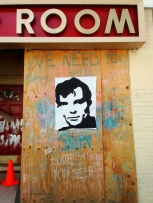 I HAD A NEW BOOK come out over the summer called Sketches of Estonia. This is the English version of the material that was published in 2016 as Kirju Eestist. The title is in homage to Miles Davis’s 1960 album Sketches of Spain and Jack Kerouac’s Book of Sketches.
I HAD A NEW BOOK come out over the summer called Sketches of Estonia. This is the English version of the material that was published in 2016 as Kirju Eestist. The title is in homage to Miles Davis’s 1960 album Sketches of Spain and Jack Kerouac’s Book of Sketches.
My beatnik leanings are no secret, but this book is really a collection of not only interesting short stories about Estonians and Estonia, but an exercise in literary styles. The pieces in the book — there are 24 chapters — were written at different times, and have diverse influences.
Some were pieces that were drawn up or held over from the My Estonia 3 or Minu Eesti 3 project. Originally, I wanted to write a similar collection of shorts for that book, which came out in 2015, but quickly recognized that the book demanded some kind of linear story line, and that there was simply too much material to pack into another My Estonia book.
The first two books are entirely linear and carried by a narrative. However, they covered roughly 18 months in my life in 2002-2003. My Estonia 3, however, covered 2007 to 2013, which made such an approach difficult. I wanted to cover this period as a general memoir, along the lines of Ernest Hemingway’s A Moveable Feast. However, while I was doing it, I noticed that the book demanded a narrative. So pieces that were originally written for the My Estonia 3 project were set aside if they were superfluous to the narrative. These formed the foundation for what later became Sketches of Estonia.
Chapters like “Kid Sirts and Surfer Taavi,” “Tea with the Icebreaker,” and “Drinking in Tallinn” came out of that time period. They were largely written in 2013 and 2014 at Aldo’s Coffee House in Greenport, Long Island.
Some of the other chapters here are even older though, and these are in my opinion quite personal. “Tree Balsam,” “How Romet Became a Clown,” “Gold Fish,” “Vastlapäev Arithmetic,” and “Gypsy Vika” were written in the 2011-2013 time period when we were living in Viljandi. I think I wrote “Tree Balsam” in Setomaa on a laptop set up on the porch. I would work and then come back to the laptop and write down my thoughts and then return to working on the country house.
Some of the pieces are quite different though. I had always wanted to write a new journalism-style profile about Andres Metspalu, and “Metspalu’s Elevator Speech” is absolutely one of my favorite chapters in this book. I took a similar approach when constructing my “Kuressaare Tropicalists” chapter. I also experimented with some modernist approaches in chapters like “Chaos and Spirits,” where I inserted “images” into the text, to allow the readers to imagine what these images looked like. I happened upon this approach once while copying something from Wikipedia. It preserved a space marked IMAGE and then the caption, but the actual images did not copy over. I realized that one could invent all kinds of images this way, ie. [IMAGE: Björk meeting with the Dalai Lama]. Ask yourself, what was Björk wearing when she met with the Dalai Lama?
It is fun, right?
The newer material in the book dates back to the 2014-2015 time period. “Pärnu After Christmas” has been readers’ favorite. It was written in Pärnu, after Christmas, in 2014. Two of the pieces were written in an ashram in India though. “Karksi House,” and “With Kaplinski at the Supermarket” were both written at Sai Baba’s Ashram in Puttaparthi in November 2015. I like these chapters because they were not heavily rewritten, and are largely untouched from what I put down working there in that peaceful state of mind. The Kaplinski chapter was later amended to include a note from the man himself!
I think I am really proud of the final chapter though, “The End of the World.” I like that I was able to get so many images into the beginning, without them being directly related, perhaps only by time. Somewhat fittingly, I can’t recall how or when I wrote it. I imagine it was finished up in Lanzarote, in the Canary Islands, in March 2016, when all of the chapters underwent editing ahead of their publication as Kirju Eestist.
Before I go, I wanted to thank Kerttu Kruusla and Signe Valdmäe for helping me with the cover of the book. Kerttu photographed the image at the Rohelise Maja Kohvik in Viljandi, and Signe wrote out the text on the same board they use to advertise their daily specials. I also thank Epp Petrone for assisting greatly in the editing and revision of the pieces, and Kristopher Rikken for his editing work, noting discrepancies in the details, or things that might not be obvious to a person not immersed in Estonian culture. Taken all together, I believe that Sketches of Estonia is solid and very much worth your time.






